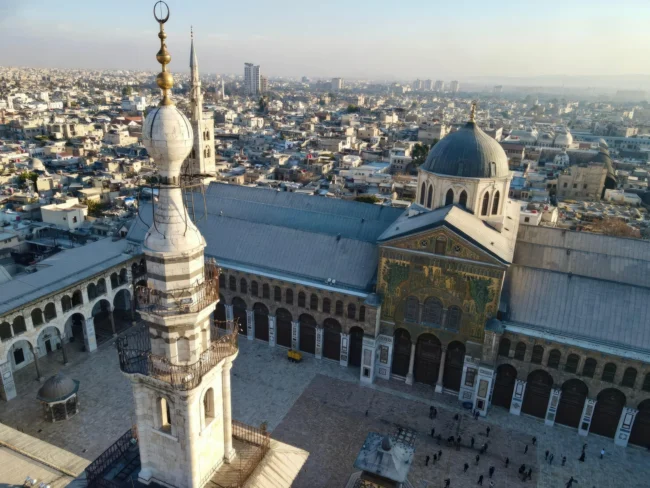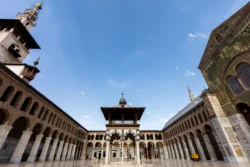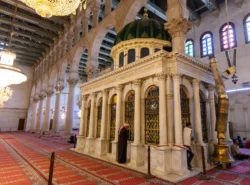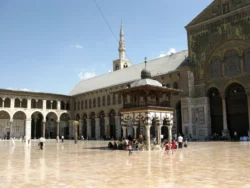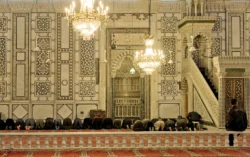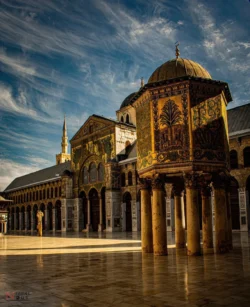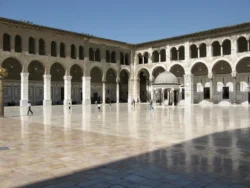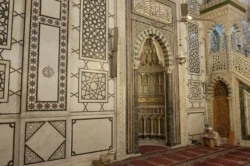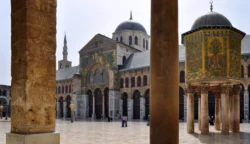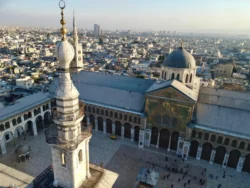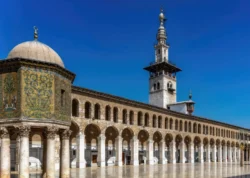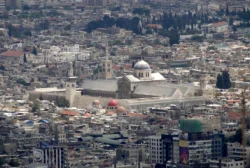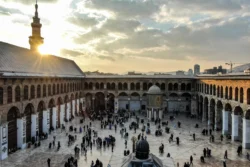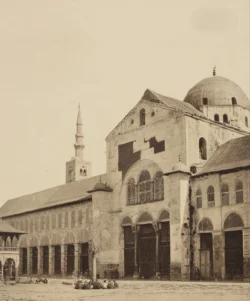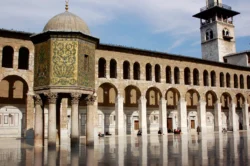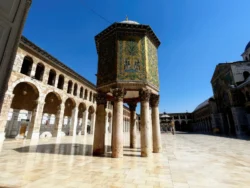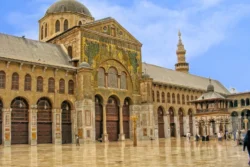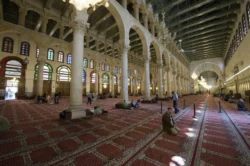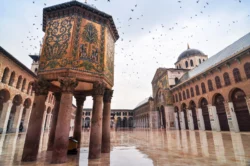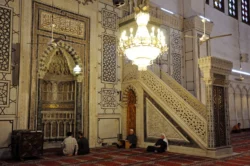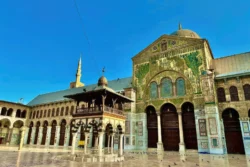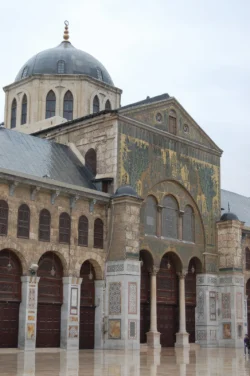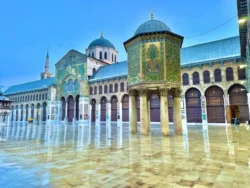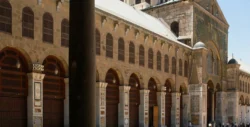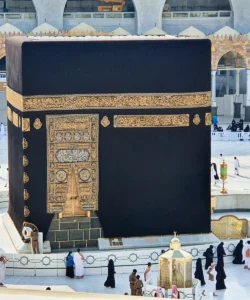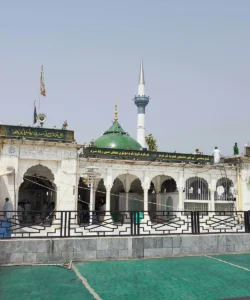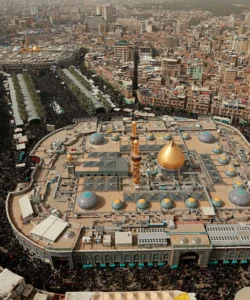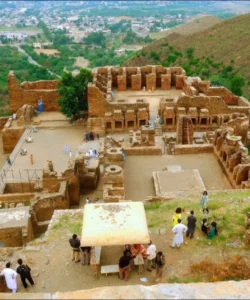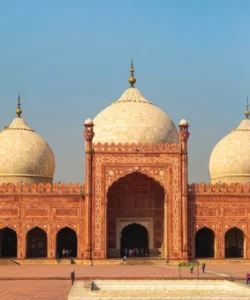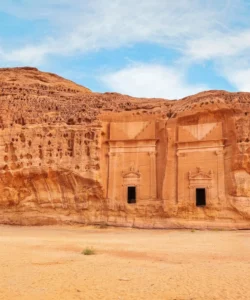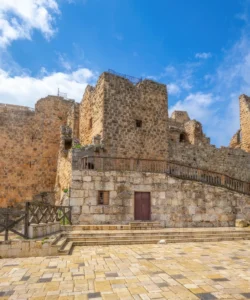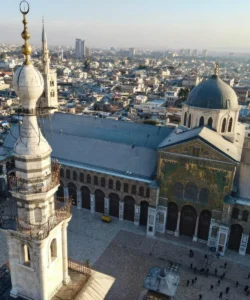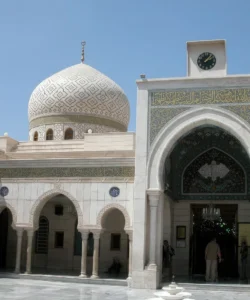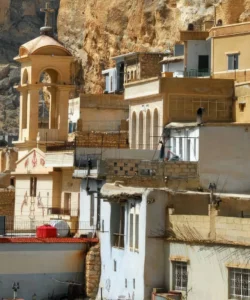The Umayyad Mosque, also known as the Great Mosque of Damascus, is one of the oldest and largest mosques in the world, located in the heart of the Ancient City of Damascus. It is a masterpiece of early Islamic architecture and a symbol of the city’s layered religious history, built on a site that has been a place of worship for millennia.
Listen to an introduction about Umayyad Mosque
Name and Address
- Name: Umayyad Mosque (Arabic: الجامع الأموي, al-Jāmi‘ al-Umawī), also known as the Great Mosque of Damascus.
- Address: The mosque is located in the walled Ancient City of Damascus, Syria. It is situated at the intersection of the city’s two main ancient axes, the cardo and the decumanus, making it the central hub of the old city.
How to Get There
A note on travel: Due to the ongoing conflict in Syria, most governments advise against all travel to the country. It is crucial to consult up-to-date travel advisories from your home country before considering any travel to the region.
Assuming safe travel is possible, here is how you would typically get there:
- On Foot: The mosque is the centerpiece of the Old City of Damascus and is easily reached on foot from any of the city’s ancient gates. Walking through the surrounding souks and narrow streets is the best way to approach it.
- By Car: While cars are not permitted in the heart of the Old City, taxis can drop you off near one of the city gates, from which it is a short walk to the mosque.
Landscape and Architecture
The Umayyad Mosque is a monumental and elegant structure that blends Roman, Byzantine, and Islamic architectural elements.
- Layered History: The mosque’s outer walls are the preserved temenos (sacred precinct) from a Roman temple dedicated to Jupiter. This temple was then converted into a Byzantine basilica dedicated to St. John the Baptist before the mosque was built.
- Courtyard and Prayer Hall: The mosque features a vast courtyard (sahn) surrounded by a portico with arches. The prayer hall is divided into three parallel aisles by two rows of columns, a layout possibly influenced by Byzantine basilicas.
- The Dome of the Eagle: The central transept of the prayer hall is crowned by a large, distinctive stone dome known as the “Dome of the Eagle.”
- Mosaics and Minarets: The mosque was once famous for its spectacular gold and glass mosaics depicting paradisiacal landscapes. While many were destroyed by fire, some fragments still survive. The mosque also features three minarets, including one known as the “Minaret of Jesus,” where tradition holds that Jesus will return to Earth.
What Makes It Famous
The Umayyad Mosque is famous for its historical significance as a symbol of early Islamic civilization, its religious importance, and its architectural beauty.
- First Great Mosque of Islam: It was commissioned by the Umayyad Caliph al-Walid I between 706 and 715 CE and is considered the first monumental mosque in Islamic history.
- Symbol of Religious Coexistence: For a period after the Muslim conquest, the site was shared by Muslims and Christians, who had a prayer room and their cathedral side by side, a testament to the city’s early religious tolerance.
- Shrine of John the Baptist: The mosque houses a shrine that is believed to contain the head of St. John the Baptist, a prophet revered by both Christians and Muslims.
- Architectural Innovation: The mosque’s design, which combined elements from existing traditions while introducing new ones like the mihrab (prayer niche) and minaret, became a prototype for mosque architecture throughout the Islamic world.
Differences from Some Other Wonders (e.g., Hagia Sophia)
While the Umayyad Mosque and Hagia Sophia are both iconic religious buildings with a shared history of cultural influence, they are distinct in their purpose and architectural style.
- Primary Function: The Umayyad Mosque was built from the ground up as a mosque, albeit on a sacred site. Hagia Sophia was built as a Christian cathedral before being converted into a mosque and then a museum.
- Architectural Style: The Umayyad Mosque’s layout, with a large courtyard and a three-aisled prayer hall, became the model for many hypostyle mosques. Hagia Sophia is defined by its massive, single dome and is a unique example of Byzantine architecture that influenced later Ottoman mosques.
- Visual Representation: The Umayyad Mosque’s original decorations of mosaics featured non-figurative paradisiacal landscapes, adhering to aniconism. Hagia Sophia’s interior, in contrast, was originally adorned with a rich array of Christian mosaics and icons.
Umayyad Mosque Photos:
